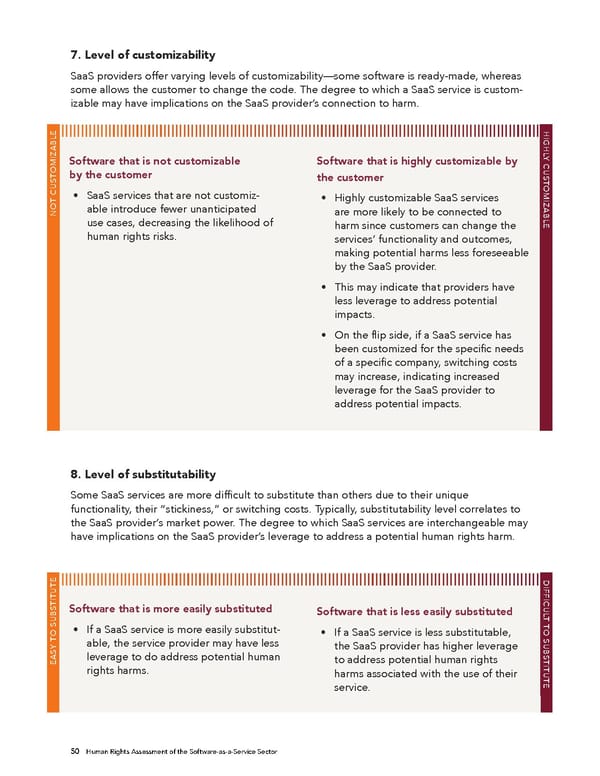7. Level of customizability SaaS providers offer varying levels of customizability—some software is ready-made, whereas some allows the customer to change the code. The degree to which a SaaS service is custom- izable may have implications on the SaaS provider’s connection to harm. HIGHL Software that is not customizable Software that is highly customizable by Y CUSTOMIZABLE by the customer the customer • SaaS services that are not customiz- • Highly customizable SaaS services NOT CUSTOMIZABLEable introduce fewer unanticipated are more likely to be connected to use cases, decreasing the likelihood of harm since customers can change the human rights risks. services’ functionality and outcomes, making potential harms less foreseeable by the SaaS provider. • This may indicate that providers have less leverage to address potential impacts. • On the flip side, if a SaaS service has been customized for the specific needs of a specific company, switching costs may increase, indicating increased leverage for the SaaS provider to address potential impacts. 8. Level of substitutability Some SaaS services are more difficult to substitute than others due to their unique functionality, their “stickiness,” or switching costs. Typically, substitutability level correlates to the SaaS provider’s market power. The degree to which SaaS services are interchangeable may have implications on the SaaS provider’s leverage to address a potential human rights harm. DIFFICUL Software that is more easily substituted Software that is less easily substituted • If a SaaS service is more easily substitut- T TO SUBSTITUTE able, the service provider may have less • If a SaaS service is less substitutable, leverage to do address potential human the SaaS provider has higher leverage EASY TO SUBSTITUTErights harms. to address potential human rights harms associated with the use of their service. 50 Human Rights Assessment of the Software-as-a-Service Sector
 Human Rights Assessment of the Software-as-a-Service Sector Page 50 Page 52
Human Rights Assessment of the Software-as-a-Service Sector Page 50 Page 52